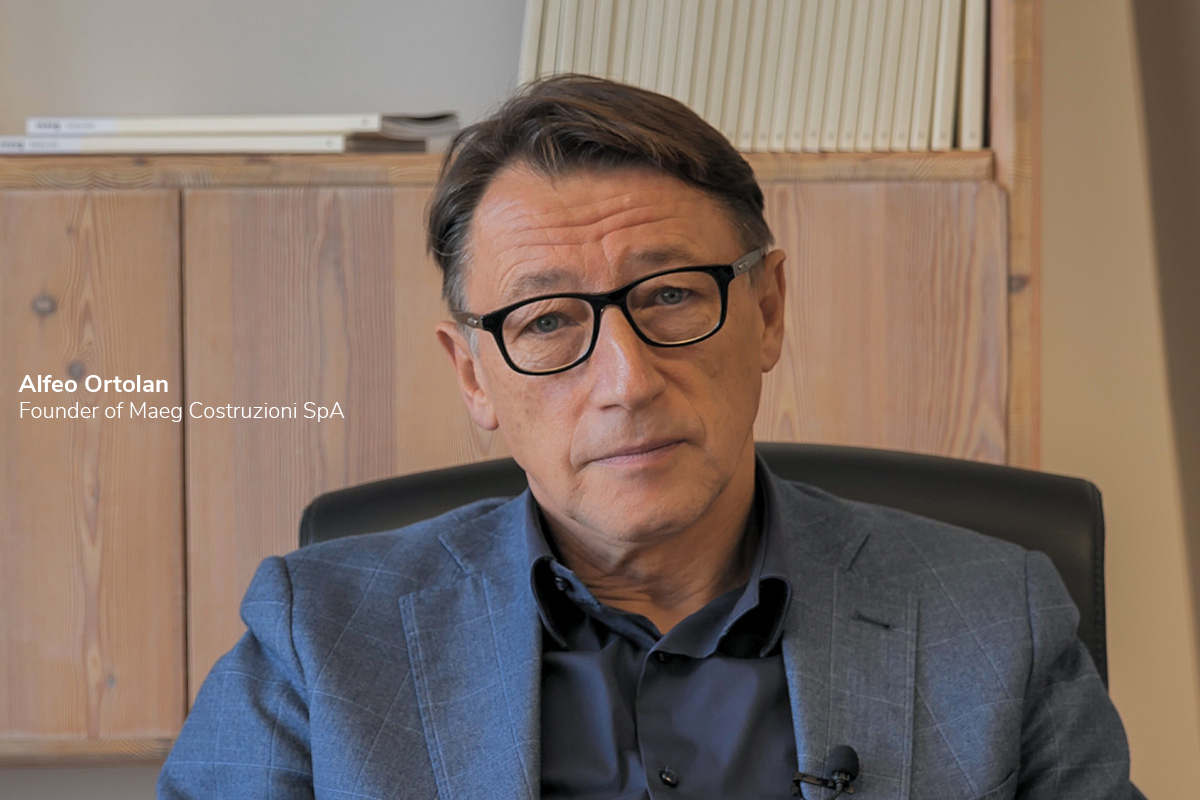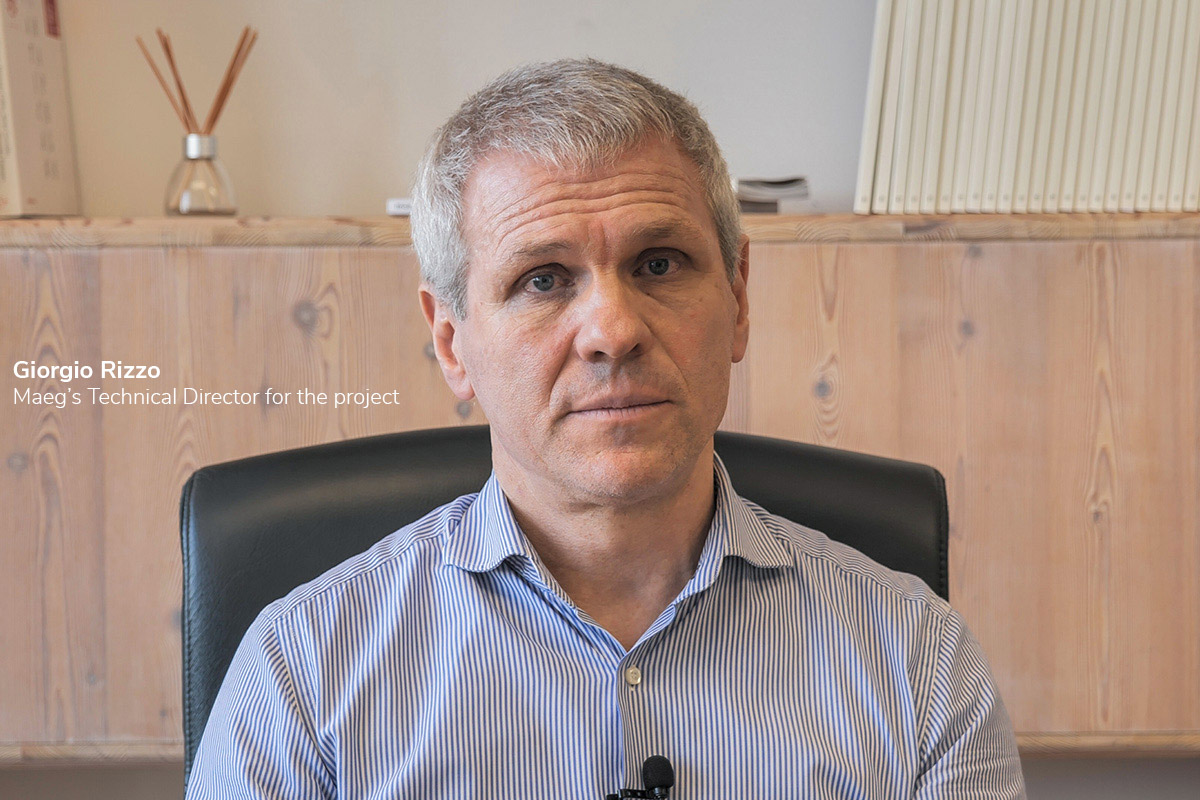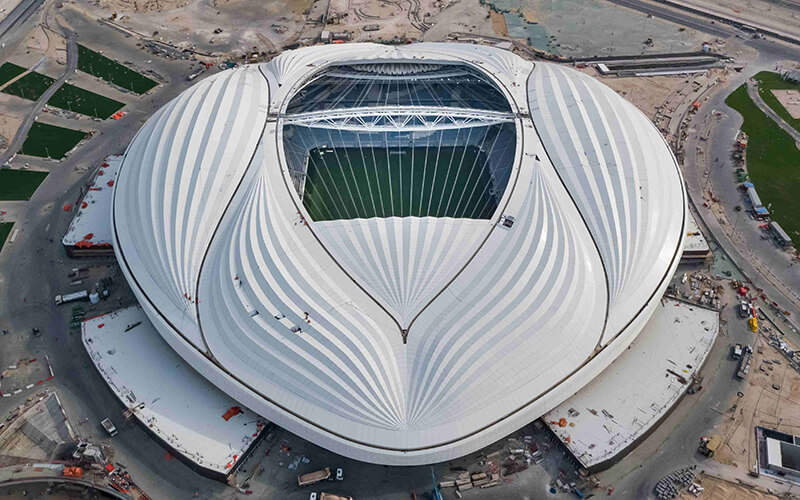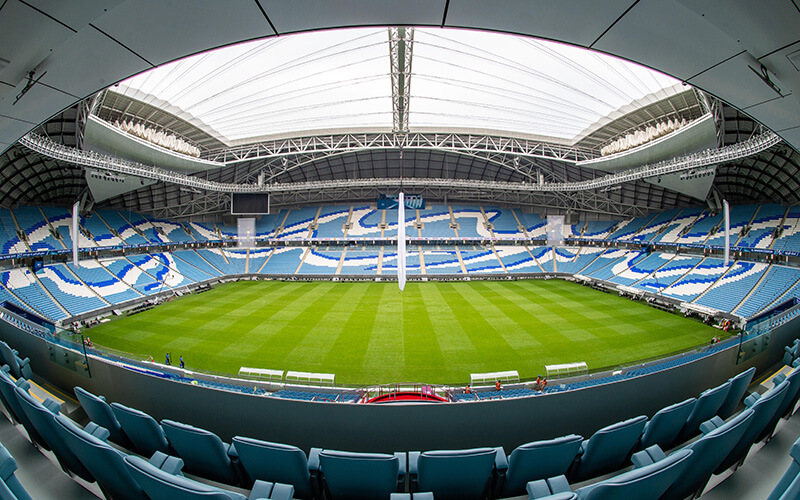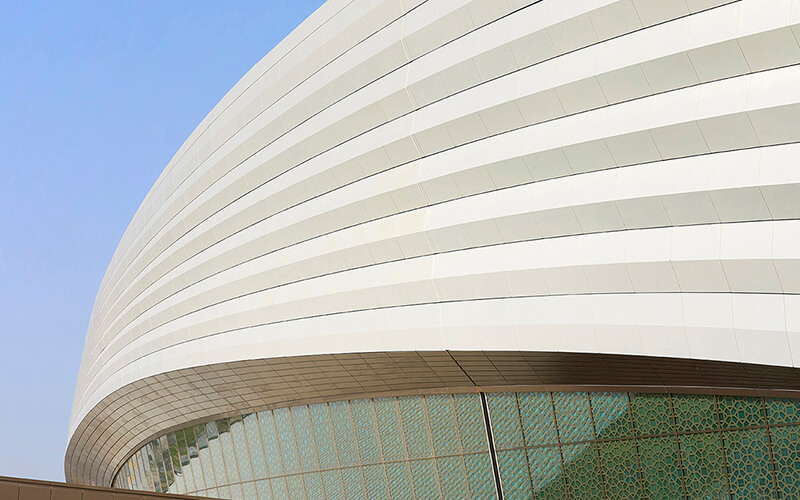This story is about football and the world, the emotions that a stadium can hold and cherish and of the special bond that this magical place can create between people and sports.
This story is about one of the most spectacular football stadiums ever built, and it is also the story of the company that believed in the idea that such project could be accomplished.
This is the story of the stadium Al Janoub, and it is also the story of Maeg that reached Qatar by chasing a dream...
Albert Camus
The history of football finds its roots in Scotland in the late nineteenth century. In Glasgow, one afternoon in late November 1872, two national teams, Scotland and England, meet to play a football match for the first time. The playing field was the West of Scotland Cricket Club, a large green expanse much larger than a regular football field. There were no facilities to accommodate the public, but at the price of one shilling for men - and at no charge for women - 4,000 spectators flocked to the place to watch the match standing on the edge of the playing field. The game, which will end in a draw, marked the beginning date of the world’s football.
From that historic match, over the course of the following decades, football spreads rapidly across every country, making millions of people fall in love with the sport, so much so that in 1928, FIFA President’s Jules Rimet approved a plan to organize a tournament of national teams from around the world. The World Cup was born and its first matched took place for the first time in Uruguay, in the summer of 1930.
1950, World Cup Final, Brazil. A huge crowd of 199,854 spectators flocked to the Maracana stadium in Rio de Janeiro, built specifically to host the event. It was a record that failed to be broken in any future match. The victory of team Brazil was taken for granted, but the Uruguay national team overcame all odds to win the final throwing a whole country in despair, with the match that will be remembered as the Maracanazo, a national mourning day in Brazil.
1970, World Cup Semi Final, Mexico. A total of 102,444 spectators sat in the stands to attend the match that will be remembered as el partido del siglo, as reported by the commemorative plaque placed on the outside of the Azteca Stadium in Mexico City. Italy and Germany faced each other in one of the most exciting matches in football history: the first and second time ended with a score of 1 to 1 and Italy won 4 to 3 in the overtime, sending millions of Italians crazy with joy.
1986, World Cup quarter finals. At the Azteca Stadium in Mexico City, under the eyes of 114,580 spectators, football legend Diego Armando Maradona takes the Argentina team to the semifinals and wins the match against England. First, he scores a goal with an irregular touch of the hand, la mano de Dios , and after a few minutes takes the ball mid-field and with a memorable run beats the English goalkeeper scoring the best goal of all time.
Sheikh Mohammed Bin Hamad Al Thani
Managing Director of the Supreme Committee for Delivery & Legacy

 |
21 November - 18 December |
 |
8 Stadiums |
 |
Air conditioning |
 |
Eco-Friendly |
2022 World Cup, Qatar. On 2 December 2010 the candidacy of Qatar gets 14 votes on the fourth ballot, overcoming that of the United States. After 52 years since its establishment, for the first time in the history of the world, the world soccer championship will be held in a Middle Eastern country. Due to the desert climate, the extreme temperatures and virtually no annual rainfall, the World Cup in Qatar will be held in winter, from November 21 to December 18, when the weather is milder.
The Qatar national team is a very young team. It played its first official match in 1970. In recent years, it began to gather growing enthusiasm and support thanks to increasingly convincing results obtained internationally: the fans are still celebrating after first, extraordinary victory of the Asian Cup, won by beating Japan in February. The country is excited and is ready to cheer for its national team and welcome the best teams in the world. Meanwhile, in addition to the expansion works of the railway and underground infrastructure system, Qatar also initiated the construction of the new ambitious stadiums that will host the finals of the World Cup in 2022. In fact, Qatar has begun a race against time to build seven stadiums from scratch and to renew the historical Khalifa International Stadium, for a total of eight sports complexes that will remain the architectural heritage of this country.
Each stadium will be equipped with an advanced air conditioning system that will ensure maximum comfort for fans and players, whatever the outside temperature: something that football had never seen before. In fact, to counteract the high temperature the conditioning system will lower the temperature to about 20 degrees Celsius in the field and 23 degrees Celsius in the stands. The innovation currently under testing calls for a system where cold air is pumped inside the stadiums through a chilled water plant: the structure of the stadium will function as a barrier to protect the bubble of cold air within and thanks to this system it will be maintained at a constant temperature for the entire match.
The stadiums, characterized by a unique and ambitious design, will all be eco-friendly: the design of the plants was in fact carried out in a sustainable manner, using only the most environmentally friendly materials. Renewable energy solutions and low energy consumption, such as the installation of solar panels, are incorporated in the structures contributing in some cases to supply the stadiums. Moreover, all stadiums are made with modular structures: this new and strategic aspect will allow at the end of the event to remove part of the stands with seats that will be allocated to the construction of new sports facilities in other locations around the world. The reduced capacity of the stadiums then will be the right size for the Qatari football league and other sporting events.
AL JANOUB STADIUM
Al Janoub was the first among the new stadiums under construction to be inaugurated. At the end of the Emir Cup, on May 16, 2019, a show took place in memory of Zaha Hadid, the architect who designed this futuristic facility. Built in Al Wakrah, the most ancient town of Qatar, famous for fishing and pearl diving, the Al Janoub Stadium owes its curvilinear design to the traditional sailboats used in the Persian Gulf. The stadium is just as spectacular inside, with the structure of itsbeams reminiscent of the giant bow of a ship. The stadium was designed with a retractable roof, which keeps the building at a comfortable temperature thanks to an innovative air conditioning system.
AL THUMAMA STADIUM
The Al Thumama Stadium is located 12 kilometers due south of Doha and the seaside promenade. With its circular and ultra-modern structure, this 40,000 seats stadium will become an icon of the skyline of Qatar. Arab Engineering Bureau is the prestigious and renowned Qatari architectural firm in charge of the Al Thumama Stadium concept design, inspired by the gahfiya, the traditional male headdress worn by men in many Arab countries, which is a key element in Qatar's dressing code, symbol of dignity and independence of this country.
EDUCATION CITY STADIUM
The design of the Education City Stadium is inspired by the history of Islamic architecture, blending traditional elements with futuristic elements. The facade of the stadium is characterized by triangular structures that form complex geometric and diamond-shaped patterns, which seem to change color based on sunlight . The stadium has received the highest rating for design and planning from the Global Sustainability Assessment System, the competent body to assess the environmental impact and sustainability of buildings: 55% of the materials used for the stadium is derived from sustainable sources and contains 28% recycled materials.
AL BAYT STADIUM
The Al Bayt Stadium is under construction in the city of Al Khor in northeastern Qatar. It is designed with a capacity of 60,000 seats and will host the World Cup matches until the semifinals. The stadium owes its name to the bayt al sha'ar, the tent used by nomadic peoples of Qatar from which it takes its shape. Just like a tent, the upper portion of the modular structure of the stadium will be removed at the end of the event and sent to developing countries. The shadow cast by the tent, the retractable roof and air conditioning system will help to maintain a comfortable temperature inside the stadium.
AL RAYYAN STADIUM
The Al Rayyan Stadium is a 40,000 seats stadium being built at the edge of the desert, a few kilometers due west of Doha. Its design is linked to the history of Qatar: the bright facade has been built with elements that remind of characteristic aspects of the country, such as desert dunes, while the intricate geometry of the stadium cladding reflects the products of the prestigious local craftsmanship. Moreover, the stadium has been designed with a focus on the informed use of materials, most of which come from the Ahmed Bin Ali stadium, which stood there before being demolished.
LUSAIL STADIUM
The Lusail Stadium is the heart of the future Lusail City, a city under construction in the desert 15 kilometers away from Doha. This futuristic 80,000-seat stadium will host both the opening ceremony of the World Cup and the final match of the event. Foster + Partners architects designed the stadium to be futuristic: inspired by the game of light and shadows that characterizes the typical Arab lantern and is enhanced by an advanced lighting system that mimics the glow of a lantern. The exterior facade of the stadium is also decorated with intricate gilded decorations that remind the local crafts and sailing vessels.
RAS ABU ABOUD STADIUM
The Ras Abu Aboud Stadium overlooking the Gulf is right in front of the beautiful skyline of Doha. The uniqueness of the stadium is that it was built using containers, removable seats and modular steel elements, ideally inspired to the adjacent port and the long maritime tradition of Doha. Thanks to this unique and visionary design by Fenwick Iribarren Architects, the building will be completely dismantled at the end of the World Cup to be used for other sports events, thus establishing a new model of sustainability and introducing new architectural planning ideas.
KHALIFA INTERNATIONAL STADIUM
The Khalifa International Stadium was a landmark for the Qatari sports, having also hosted during its illustrious history the Gulf Cup, Asian Games and the Asian Nations Cup. The stadium makeover was completed in May of 2017: the outer facade has been completely replaced by a futuristic structure, enriched by two iconic arches that surround the stadium, visible km away. To protect the stage from sunlight and to maintain a constant internal temperature, also thanks to the air conditioning system, a roof structure under the arches has been added.
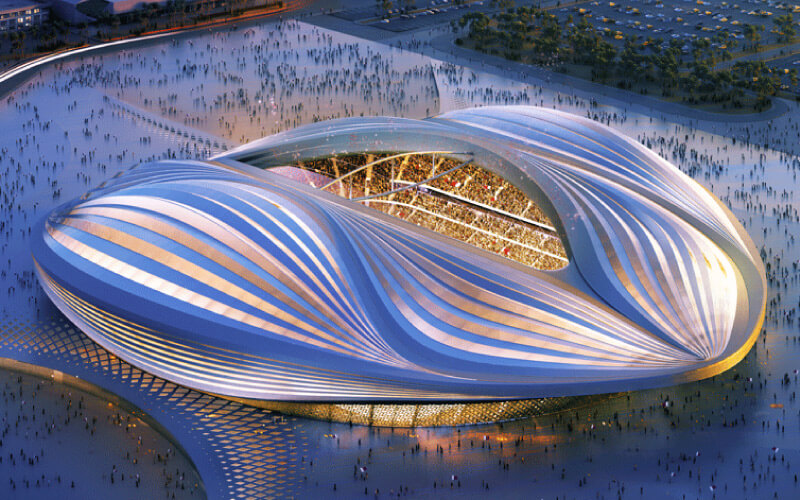
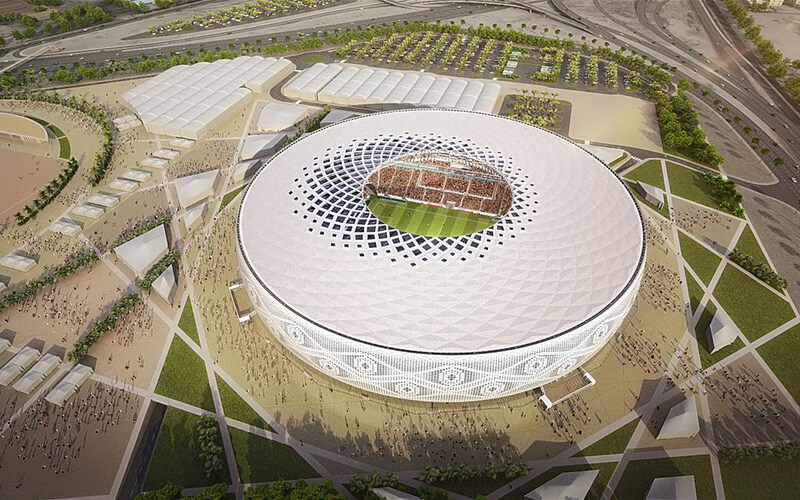
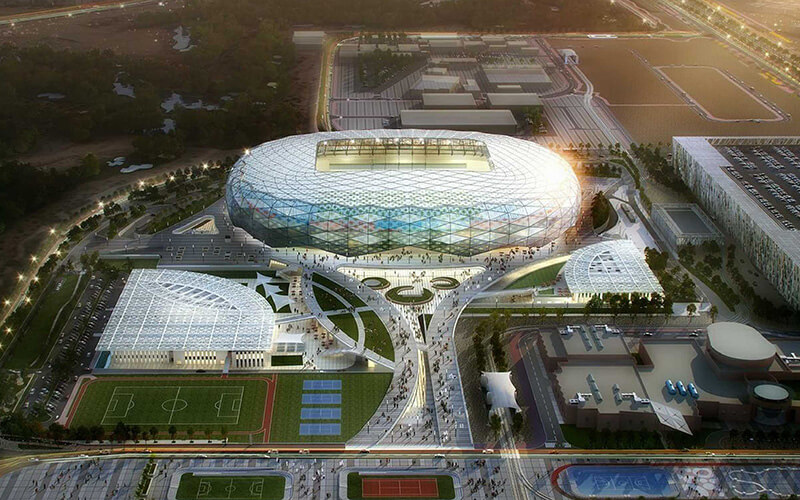
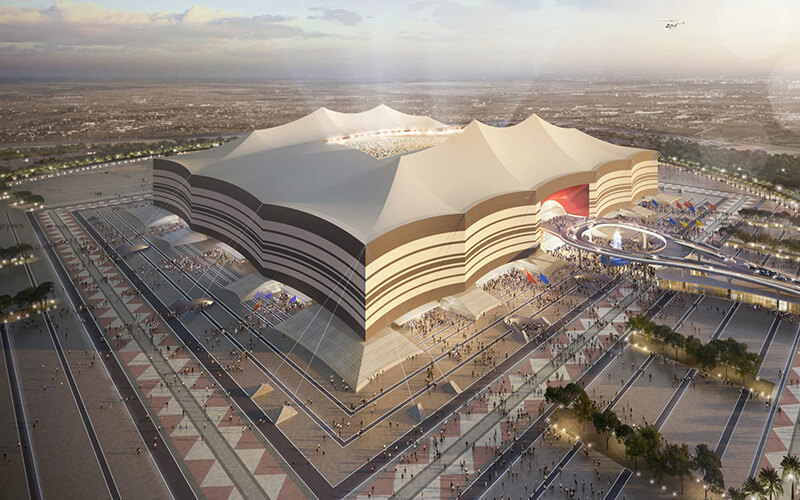
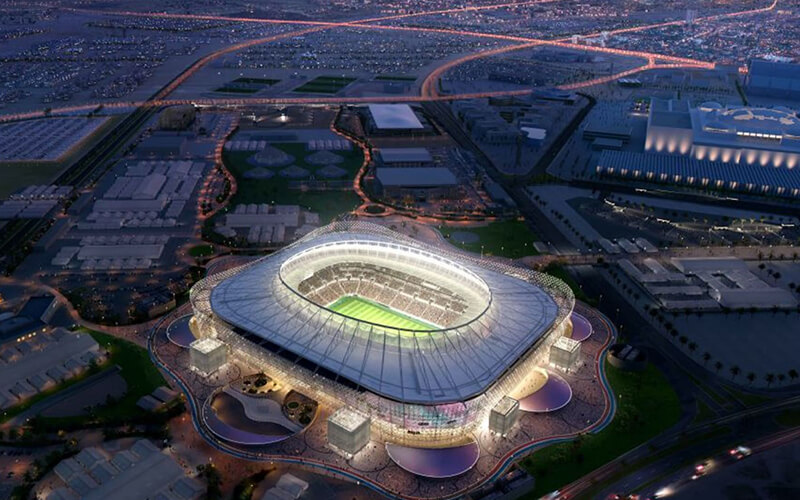
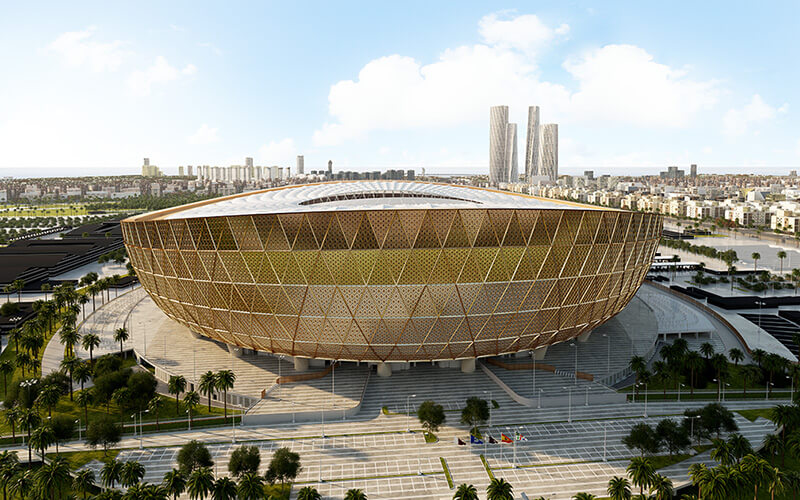
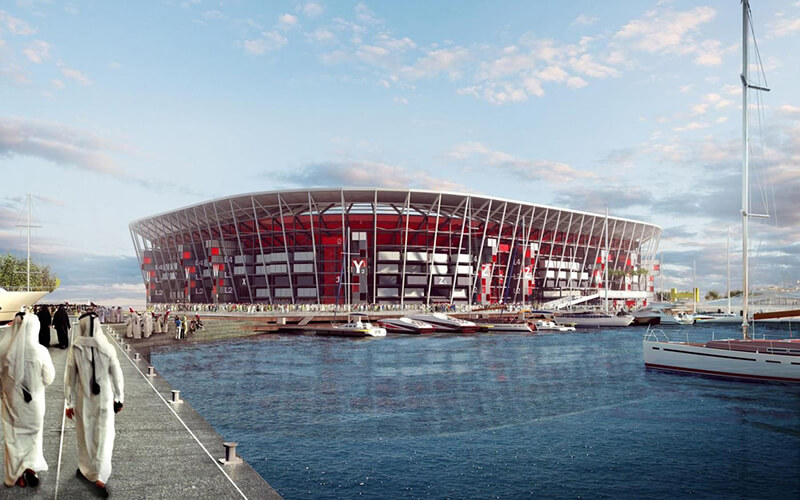
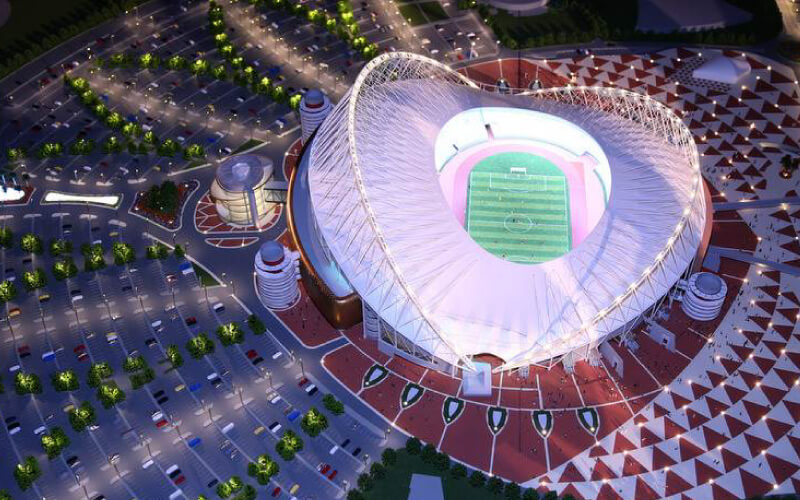
Zaha Hadid is one of the most influential architects and visionaries of our time. The first woman to win the Pritzker Prize, the equivalent of the Nobel Prize in architecture, with her extraordinary artistic skills and her original style helped to redefine the architectural standards of the XXI century. A great experimenter, she has often ventured beyond the boundaries between architecture and design, creating some of the most important contemporary buildings in the world. The Al Janoub stadium is one of the last extraordinary projects designed by Zaha Hadid, who, unfortunately, could not see it completed due to her untimely death in 2016.
In 2013, Zaha Hadid Architects (ZHA) submitted its project to the Al Janoub Al Wakrah stadium, destined to host the quarter finals of the World Cup 2022. Zaha Hadid has designed a unique stadium, capable at the same time to face the scorching heat of the region and to honor the history and tradition of Qatar: This is probably the most iconic stadium among those commissioned for the football competition. The elegance of its pleated facades, the dynamism of the geometries and innovation of its retractable roof created a unique stadium masterpiece.
Jim Heverin, ZHA Project Director, explained that to create the Zaha Hadid stadium, he analyzed the shapes of the Dhow, a traditional Arab sailing boat: " we didn’t want to literally blow up a Dhow boat, so we looked at abstracting it in order to create something dynamic and organic—something that has multiple interpretations”. The result is an charming building: "the hull of the Dhow, similar to a seashell, is the roof of the stadium, as if it were made of a collection of shells. Internally, the building is characterized by ribs, recalling the structure of the hull, while externally the cladding is pleated like that of a sail».
Zaha Hadid
To design the the sliding roof, ZHA has partnered with the German engineering and consulting company Schlaich Bergermann. Made with membranes in polytetrafluoroethylene (PTFE), the roof can be opened as if it were a sail, protecting from players and spectators from heat. To this protective barrier, which is also spectacular, also is combined a giant air conditioning system installed inside the stadium, powered by solar panels: thanks to the widespread distribution of appropriate piping below the stands, the stadium will be pumped with air conditioning, which will then be collected, recycled and cooled again, creating a continuous cycle within the structure.
The Supreme Committee for Delivery & Legacy, the body responsible for the supervision of projects for the 2022 World Cup, has submitted an application for the construction of a stadium with a capacity of 40,000 seats. A clause therein specifies that half of said seats will have to be removed at the end of the event to be able to host more appropriately the Qatari league matches. The 20,000 temporary seats were then designed and built to be removed after the event: they will be transported to the developing countries in need of sports infrastructure, helping to spread the passion for the game of football.
That makes life that much better. ”
Zaha Hadid
The inauguration of the Al Janoub stadium had worldwide resonance. Its construction was also widely celebrated thanks to the elegance of its design that makes it a unique structure, the technical difficulties that had to be overcome to build it and the fact that the stadium was completed three and a half years before the World Cup 2022. Maeg was able to complete a complex and highly prestigious project, in extreme weather conditions and with very tight deadlines.
The privilege of being able to create a project signed Zaha Hadid and the international recognition that ensued make our company very proud hich and we are now ready to take on new challenges, enriched by the experience.
The kickoff of the World Cup 2022 is approaching fast. For the first time in the history of the sport, fans around the world are impatiently looking forward to the winter season to cheer their national football team in the top event in football. . Meanwhile, Qatar prepares to host the most spectacular sporting event of recent times...
Alfeo Ortolan, Founder of Maeg Costruzioni SpA
CREDITS
Video:
Supreme Committee for Delivery & Legacy, Road to 2022, AFC Asian Cup
Images:
zaha-hadid.com, fifa.com, thestadiumbusiness.com, aljazeera.com, sc.qa, dohastadiumplusqatar.com
PARTNER


